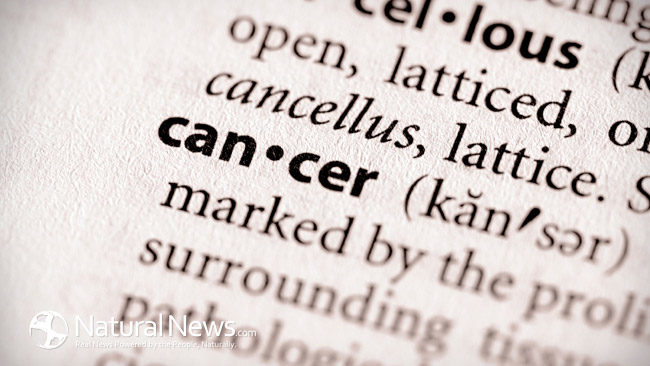What Are Statins?
Statins are the most lucrative drugs in history. They’re now a $29 billion cash cow. Under the guidelines of the American Heart Association, 49% of all Americans over 40 should be on statins. If you’re over 60, there’s a 77% chance your doctor will put you on one.
But that’s still not enough for Big Pharma. They’re greedy. Now they want to turn statins into a treatment for cancer! Let me explain…
Link Between High Cholesterol And Cancer
A new 14-year study from the U.K. followed nearly a million patients. They were looking for a link between high cholesterol and cancer.
Instead, they found that people diagnosed with high cholesterol had lower death rates from cancers.
Having a diagnosis of high cholesterol was linked with:
- a 22% lower risk of death in lung cancer patients
- a 43% lower risk of death in breast cancer patients
- a 30% lower risk of death in bowel cancer patients
- a 47% lower risk of death in prostate cancer patients1
Now, most people seeing those results would say that high cholesterol seems to be a benefit for cancer patients. But these researchers couldn’t accept the idea that cholesterol is good. Instead, they speculated that most people with a high cholesterol diagnosis are probably taking statins — so these good survival numbers must be the result of statins.
But get this. They had NO idea whether ANY of those cancer patients were actually on statins.
As I looked at the news reports about the study, I kept searching for how they made the connection between statins and lower death rates from cancer. It just wasn’t there.
They made an assumption.
Statin Drugs Promote Cancer
The sad fact is that statin drugs promote cancer by lowering cholesterol. Large studies show that people with low levels of cholesterol have higher rates of cancer.
In one study, researchers gave 5,804 elderly men and women either a placebo or the statin drug Pravachol. After 3.2 years the drug lowered LDL cholesterol by 34%. But people on the drug also had a 25% increase in new cancers.2
In Japan, researchers gave statins daily to more than 47,000 people. After six years, cancer deaths were three times higher in patients who had the lowest cholesterol compared to those with high levels.3
Statins Doubled Women’s Risk of Breast Cancer
Another recent study showed that taking statins for 10 years almost doubled women’s risk of breast cancer.4
How Does Cholesterol Protect Against Cancer?
The truth is that cholesterol protects against cancer by supporting the immune system. It binds to all kinds of microorganisms and toxins. It inactivates them. It protects you before cancer can get a foothold.5
For over 20 years I’ve been saying that cholesterol is critical for good health. I encourage my patients to raise their levels of HDL cholesterol instead of worrying about high cholesterol. Studies show if you raise your HDL high enough you’ll have almost no chance of heart disease.
Here are three easy ways to raise your HDL levels:
- Follow My PACE Program. An exercise that has increasing exertion — like my PACE workout — is the most effective way to increase your HDL levels. One study of Navy personnel doing PACE-type training proved it. Doing the workout for just five days increased HDL levels by 31%.
- Increase Your Omega-3s. Omega-3 fats increase HDL as well. You can find them in wild-caught salmon, grass-fed beef, sardines, walnuts and olive oil. Or you can take a supplement. For most people, I recommend 4,000 mg per day from krill or squid oil.
- Get more niacin. Studies show niacin (vitamin B3) raises HDL levels by 25 to 30%. You can get niacin from grass-fed beef, pastured poultry, wild-caught salmon and peanuts. But to raise HDL levels you’ll need 750 to 1,000 mg a day. For that you’ll have to supplement. I recommend starting at a small dose of 250 mg per day because too much niacin can lead to “flushing.” That means facial redness and tingling. It’s harmless and goes away, but it
can be alarming if you don’t know what it is. - Increase the amount gradually every month until you get up to your target. You can also split your dose into twice a day to help reduce the flush.
To Your Good Health,
Al Sears, MD, CNS
1. European Society of Cardiology. “Statins may be associated with reduced mortality in 4 common cancers: High cholesterol diagnosis associated with lower risk of death in lung, breast, prostate and bowel cancers.” ScienceDaily. ScienceDaily, 8 July 2016.
2. Shepherd J, Blauw GJ, Murphy MB, et al. on behalf of the prosper (Prospective Study of Pravastatin in the Elderly at Risk) study group. “Pravastatin in elderly individuals at risk of vascular disease (prosper): a randomised controlled trial.” Lancet. 2002;360:1623–30.
3. Matsuzaki M, Kita T, Mabuchi H, et al. “Large scale cohort study of the relationship between serum cholesterol concentration and coronary events with low-dose simvastatin therapy in Japanese patients with hypercholesterolemia.” Circ J 2002;66:1087–1095.
4. McDougall JA, Malone KE, Daling JR,et al. “Long-term statin use and risk of ductal and lobular breast cancer among women 55 to 74 years of age.” Cancer Epidemiol Biomarkers Prev 2013;22:1529–1537.
5. Uffe Ravnskov, Paul J. Rosch, Kilmer S. McCully. “Statins Do Not Protect Against Cancer: Quite the Opposite.” Journal of Clinial Oncology, 2014.58.9564.





